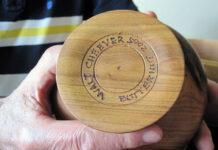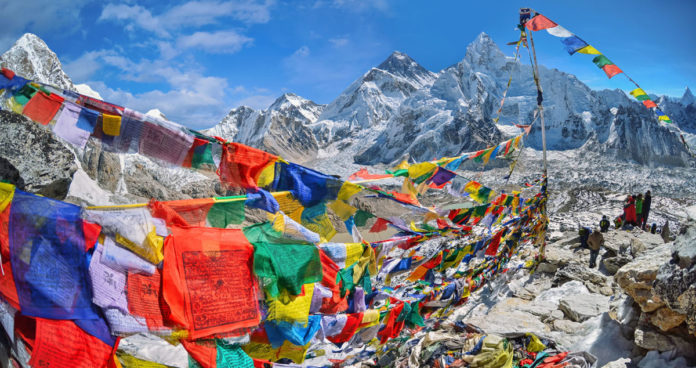
On May 23, 2014, 13-year-old Poorna Malavath emerged from her tent, one of several colorful nylon structures that spotted the landscape around her at Base Camp III. For the past three days, she and her climbing team had rested at this camp, located on the South Col—a sharp-edged ridge between Mt. Everest and its sister peak, Lhotse. They had used the time to acclimate to the high altitude—nearly 26,000 feet above sea level—and prepare for the final stretch of their 52-day journey: the climb to the top of Mt. Everest.
Malavath was clad head-to-toe in heavy duty cold weather gear, and her face was nearly hidden behind snow goggles and an oxygen mask that covered her mouth and cheeks. Yet even with all her gear, she could still feel the chill in the air around her—it was less than -20 degrees F.
More than the cold, though, Malavath felt an excited energy welling up in her stomach. Tonight was the night that she had been anticipating for the past year: She was going to summit Mt. Everest.
At 9:30 p.m., the area was almost entirely covered in darkness. Only dim beams from people’s headlamps illuminated the void. Malavath flipped on her own headlamp, turning towards the famous peak that she had spent almost two months climbing toward. But it wasn’t visible in the darkness. The only way to tell it was there was to notice the absence of stars in the sky.
Malavath and her team needed to start late in the night in order to make it to the peak early enough the next day to have time to return safely to camp. Overall, it would take nearly 10 hours to reach the top of the mountain, and another 10 hours to return.
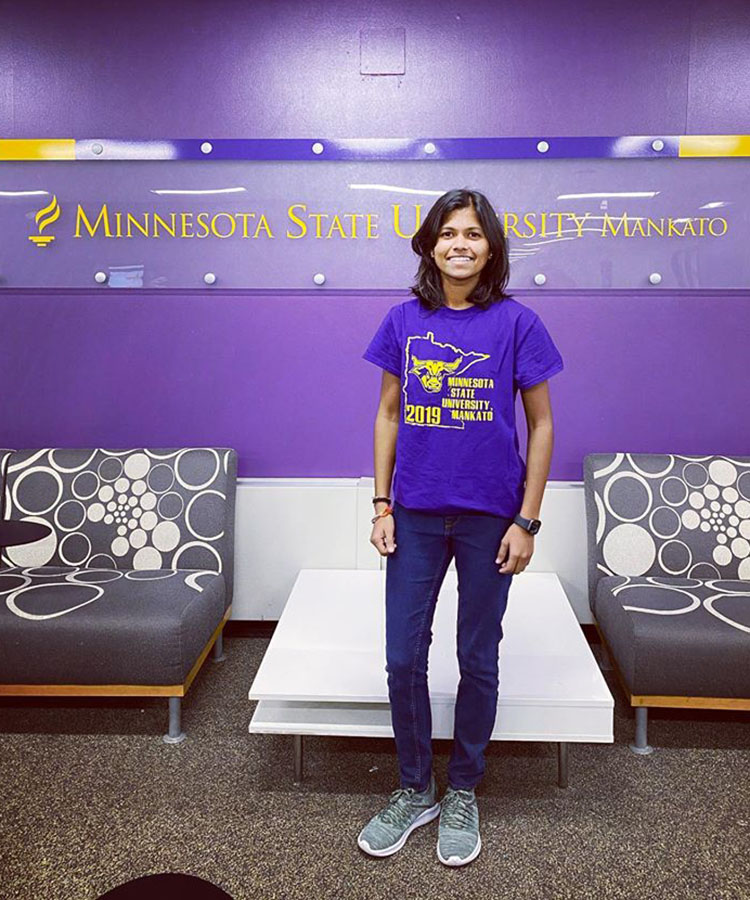
So, Malavath and her team pushed into the darkness. She could barely see anything around her—only one icy step after another. Unlike other parts of the climb, which had been filled with lighthearted banter between teammates, no one seemed to feel like talking in this final stretch. Perhaps it was because everyone was painfully aware that they were climbing in the “Death Zone,” where there is so little oxygen that the human body starts to die minute by minute. Despite the use of supplemental oxygen, the climb is still extremely dangerous; most deaths on Mt. Everest—more than 200 so far—have occurred in that final one-mile stretch between Base Camp III and the summit. Even if they tried not to think about it, the team members were continually reminded as they came across bodies of climbers who hadn’t made it back.
When I got the opportunity to climb Mt. Everest, I decided to prove that girls can do anything, but after that, I just loved having adventures and fell in love with mountains– Poorna Malavath
Malavath sucked in breath after ragged breath, willing herself to keep climbing. While they had only been working for half an hour, it was already difficult to breathe, like sucking air through a straw. And, while her load was relatively light—only about 20 pounds—it seemed to grow heavier with every labored step, especially as she slipped on the ice that her crampons could barely dent. Cold air seeped through her gloves and into her fingers, making them slow and clumsy as she attempted to clip her carabiner onto the belay rope strung along the path.
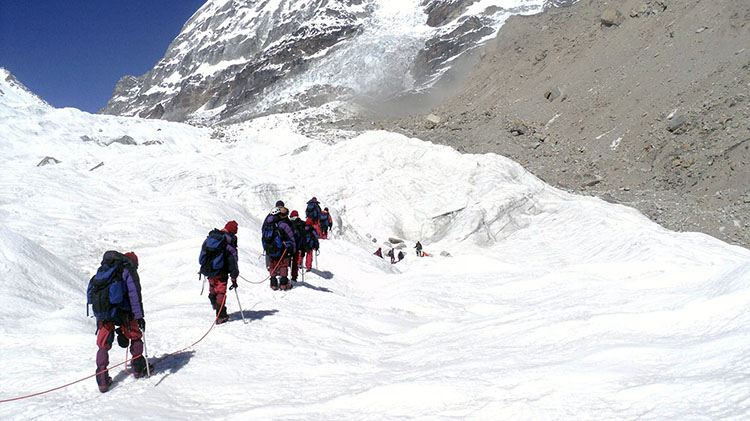
The climb continued, slowly, painfully, as the team struggled past rocky cliffs, loose snow and dangerous crevices. At times, they needed to pull themselves up vertical cliffs as a ferocious wind whipped against them—its scream the only thing they could hear above their heavy breathing. Malavath held tightly to the belay that was strung out before her—her pathway to the top. If she didn’t fix her carabiner to it securely, she could go tumbling down the slope and be lost. Her whole body ached. Her feet were going numb, while her hands were stinging. She was impossibly tired. But she couldn’t stop now.
Then, a little before 5 a.m., light started seeping into the sky. Slowly, the top of the mountain came into focus. It was deceptively close—and yet, still so far away. But now Malavath had something to fix her eyes onto, a real and tangible reason to keep going. So she did.
By 5:45 a.m., she had almost reached the top when she came across a pile of clothes. She turned to her Sherpa, the porter who was carrying most of her supplies, and asked, “Why did someone leave their clothes here?”
“Those aren’t clothes,” he replied. “That’s a dead body.”
Malavath’s legs started to shake, and she fought to control the fear that rippled through her.
Could I become like that? she wondered. What if I don’t make it down, either?
I will not turn back until I succeed– Poorna Malavath
But then she remembered the mantra that had gotten her this far, a mantra she had repeated in school every day and had repeated every day of her climb: “I will not turn back until I succeed.”
So Malavath climbed past the body, fixing her eyes instead on the peak. And at 6 a.m. that morning, she reached the top.
“I really wanted to jump with joy, but I couldn’t because I was really tired,” she recalled. “All around Everest, there were only mighty mountains. It was really cinematic. I really liked the view. I still remember that moment… like it’s still in front of me now.”
On May 25, 2014, Malavath became the youngest female climber in the world to summit Mt. Everest. But she didn’t stop there. Now an exchange student at MSU-Mankato, the 19-year-old mountaineer is attempting to climb the Seven Summits—the seven highest mountains on each continent. As of last December, she ticked off her sixth one: Vinson Massif in Antarctica. She hopes to complete her final trek, Alaska’s Denali, before she leaves the country this summer.
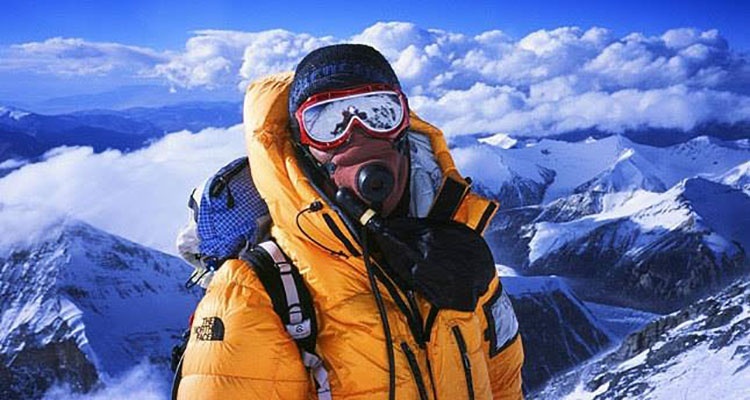
Through all her climbs, Malavath’s goal has been to encourage other girls and women to never give up on their dreams.
“I feel that girls can do anything,” she said. “And when I got the opportunity to climb Mt. Everest, I decided to prove that. Everything is possible. We just need to believe in ourselves—that’s it.”
Now, Malavath continues to prove that maxim—one step at a time.
A Humble Start
Malavath was born in Pakala, a small village in the Indian state of Telangana. Her parents were farmers, earning about 2,000 rupees (about $1) a month—far below even India’s poverty line. As part of the Dalit ethnic class, the family belonged to one of India’s least privileged groups. Malavath grew up outside a village that didn’t have shops or buses; she recalled needing to walk three miles to even buy a matchbox.
Things changed when Malavath was accepted into the Telangana Social Welfare Residential Education Institutions Society (TSWREIS), a program for underprivileged students with qualifying test scores. Starting in sixth grade, she began studying at one of the state-run boarding schools in Telangana. A few years later, the TSWREIS Secretary, Dr. R. S. Praveen Kumar, organized “Operation Everest,” which was a project aimed at helping train students in mountain climbing and encouraging them to see that anything was possible.
“He wanted to show that everybody can do anything,” Malavath explained. “He wanted to show that through students.”
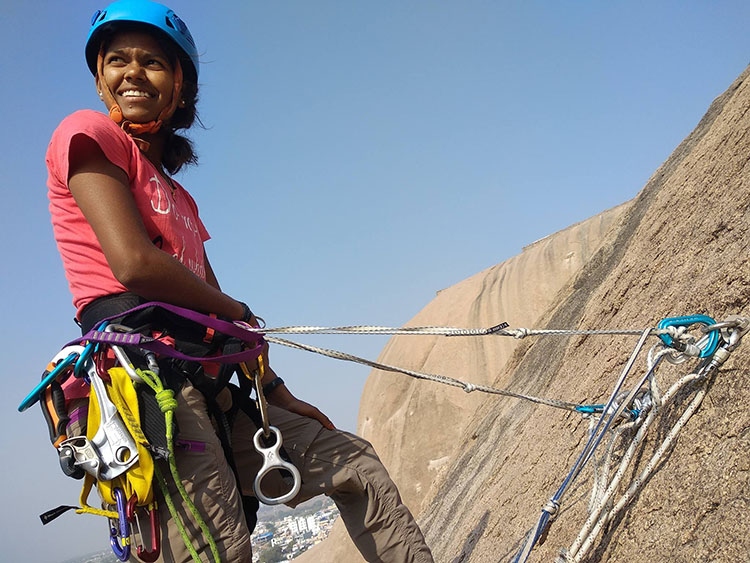
Kumar worked with Shekbar Babu, a professional mountaineer and the first south Indian to climb Mt. Everest, to create the program. They decided to select 100 students from across Telangana for the first phase, which would introduce students to the basics of mountain climbing in a one-week workshop. At the time, Malavath was in ninth grade, and she was approached by a teacher about joining the project because she was athletic and played volleyball.
“My sports teacher came to me and asked, ‘Do you know mountaineering?’” Malavath said. “And I said, ‘I don’t know anything about that… But it looks different. I just want to try.’”
Malavath was selected to attend the workshop, which took place at Rock Climbing School Bhongir and was taught by Babu. There, Malavath faced her first mountaineering challenge: learning to climb the 600-foot rock surface in front of her.
We have 10 Commands in our schools, that our province gave us to lift up our spirits. The first one is, ‘I’m not inferior to anyone.’ And the last one is, ‘I shall never give up.’ We used to say that every day.– Poorna Malavath
“I only saw small, small rocks and stones in my village,” she said. “I’d never seen that much of a rock before. I was so scared. I was like, ‘Oh my God, how can I climb this?’ The first day, I told my coach, ‘I cannot do this.’ But he encouraged me and told me some tips, and I just started slowly climbing.”
Even though Malavath clearly remembers her legs “shivering” on the rock as she learned to rappel, by the end of the week-long workshop, she had made it to the top. Not only that, but she had impressed her coach so much that she was the first choice when the 100 students were whittled down to 20 for the next phase.
“When they took us to every activity, I was always saying, ‘I want to do that,’” Malavath said, adding that this enthusiasm was why she was selected. “I always went first. My interest and activity—that’s why they picked me.”
Onward and Upward
After Malavath was selected, she and the other 19 students attended a one-month basic mountaineering course in West Bengal, India. They camped out the entire time, carrying their packs and tents as they practiced climbing and learning how to acclimate to high altitudes on the mountains of Darjeeling. One summit, Mt. Renock, was 17,000 feet high, about half of the height of Mt. Everest.
From there, Malavath once again made the cut as the group was whittled down to nine students for a winter exploration session that was focused on climbing the mountains in Ladakh, India. For 15 days, she and the other students camped out on the mountains, weathered -30 degree F temperatures and learned more progressive climbing skills.
Finally, Malavath and another student, 17-year-old S. Anand Kumar, were chosen as the two students who would have a chance to actually summit Mt. Everest. They trained for three months, before and after school. The training included 12-15 mile jogs every day, yoga, meditation, and drinking lots and lots of milk—which was difficult for Malavath at first, since she hated drinking milk.
For Malavath, the training seemed excessive.
“I always asked [Anand], ‘Why do we want to do this much training? I don’t think Everest is so hard,’” she recalled. “I saw my coach’s videos and photos, but I thought, ‘It’s not going to be harder than this training.’ But Everest is completely different than that training and winter exploration was. It was so hard… so hard.”
No Reverse Gear
Malavath began her journey to the top of Mt. Everest in April 2014. She was joined by Anand Kumar, Babu and the Sherpas they hired to carry most of their supplies, and they decided to climb from China (the more commonly used route starts in Nepal), since Babu had used that route when he summited the mountain in 2007.
While Malavath and her team were acclimating to the conditions at North Base Camp in Tibet (the first camp along the Chinese route), they received grim news: a freak avalanche had killed 16 climbers along the Nepal route. Shortly afterwards, Praveen Kumar called Malavath via satellite phone, asking her and the other team members to return to safety as the Nepali government banned any more climbing from their side of the mountain.
But for Malavath, turning around was not an option.
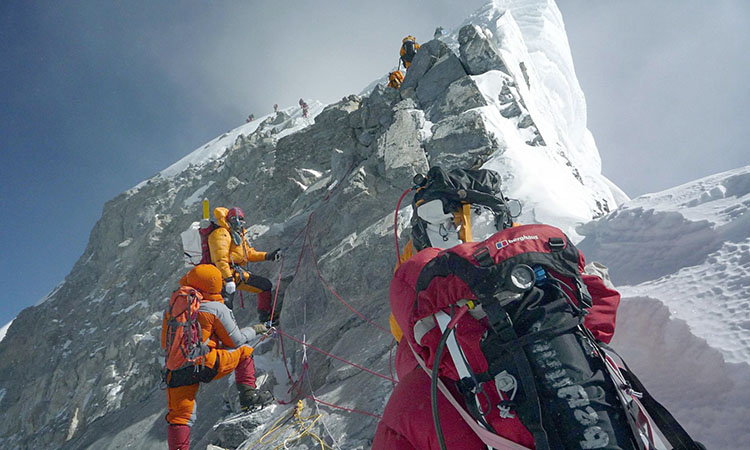
“We have 10 Commands in our schools, that our province gave us to lift up our spirits,” she said. “The first one is, ‘I’m not inferior to anyone.’ And the last one is, ‘I shall never give up.’ We used to say that every day. And I just told [Kumar], ‘We have no reverse gear. I shall never give up until I reach the top.’ He was very quiet… and I told him, ‘You taught us that we have no reverse gear until we reach whatever we’ve dreamed.’ And he said, ‘Okay.’ We started just after the incident, and we forgot everything and started climbing.”
Malavath’s trip to the top of Mt. Everest took 52 days, with the majority of the time spent in different camps along the way. This is a requirement for climbers, who need to spend at least 3-4 days at each camp to acclimate to the altitude before moving on. For Malavath, this process took even longer, and she struggled with altitude sickness, including near-constant vomiting. It became so bad that she was sent back from Camp I to Base Camp to spend more time acclimating.
All around Everest, there were only mighty mountains. It was really cinematic. I really liked the view. I still remember that moment… like it’s still in front of me now.– Poorna Malavath
“It was a double trip for me,” Malavath said with a laugh, “so it was a lot of strain.”
There were many dangers along the way, including a gaping crevice that Malavath had to cross via unstable ladders—made even more difficult because of the bulky crampons attached to her boots. She said the most difficult part for her was the stretch between Advanced Base Camp and Camp 1, since it contained sheer walls of ice that climbers had to overcome.
Once Malavath reached Camp IV, she entered into the “death zone,” reaching the point of no return. She and her team hiked through the night of May 24 and reached the summit early May 25, 2014. They only stayed a few minutes, taking photos with the Indian flag and the Telanganan flag. Malavath called Praveen Kumar on the satellite phone, announcing her success. She also grabbed a small rock to carry back home.
The trek down was much quicker than the climb up; it only took about three days to return. But coming down is actually more difficult and dangerous than going up, because the climbers weren’t able to use their ascenders to attach themselves to their belay. Instead, they could only use self-anchor carabiners. These would eventually stop their fall, but they wouldn’t know when they’d stop—and they might end up stopping too late if a hidden crevice was underfoot.
“Every step is really dangerous,” Malavath said. “We had to be very careful.”
When Malavath returned to India, she became a national celebrity thanks to her world record-breaking climb. She met her prime minister, Narendra Modi. She was invited to New York to speak at the United Nations’ Sustainable Development Summit. She was even the subject of a full-length feature film, Poorna: Courage Has No Limit.
But Malavath’s story was far from over.
Climb Every Mountain
While Malavath took some time to focus on her studies when she returned to India, she soon set her focus on the larger challenge she had set for herself: climbing the Seven Summits, which include the highest mountains on every continent.
“When I got the opportunity to climb Mt. Everest, I decided to prove that girls can do anything, but after that, I just loved having adventures and fell in love with mountains,” Malavath said.
Malavath climbed Kilimanjaro, the highest mountain in Africa, in 2016, and Mount Elbrus, the highest mountain in Europe, in 2017. She didn’t climb any mountains in 2018 but more than made up for it in 2019, when she managed to summit three more: Aconcagua (in South America), Carstensz Pyramid (in Indonesia) and Mount Vinson (in Antarctica).
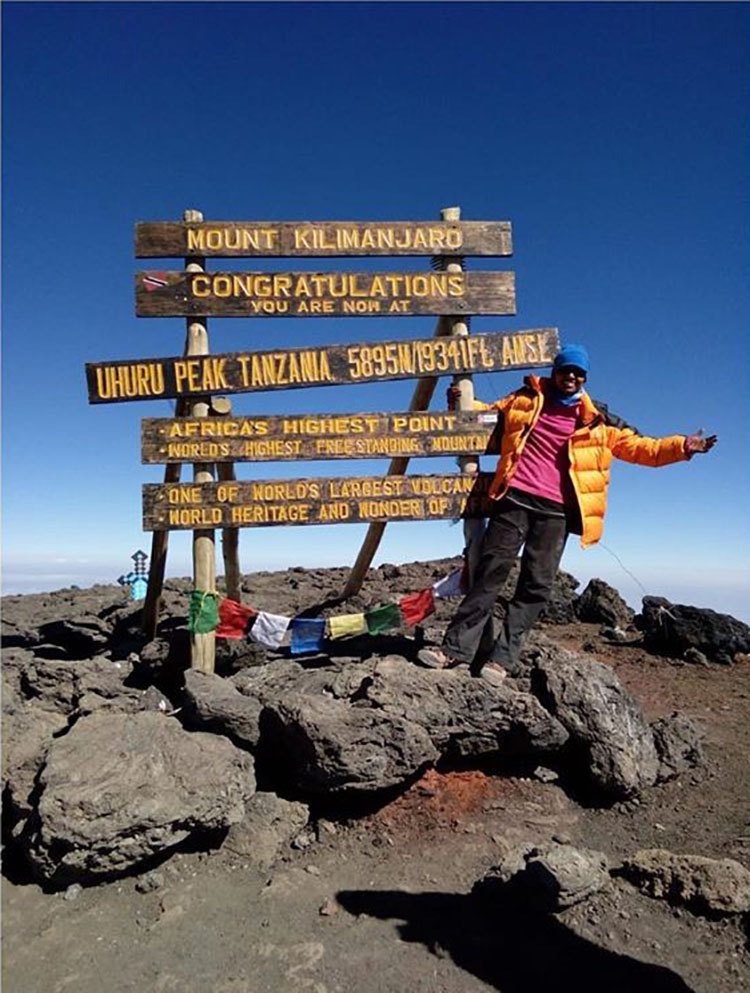
While Mt. Everest took the longest to climb, the other peaks came with their own share of difficulties. Carstensz Pyramid (also known as Puncak Jaya) only took about five days to reach the summit and back, but it was one of the most difficult climbs because of its hard rock surface. Malavath needed to hike through dense jungle and intensely rainy weather, which made the terrain dangerously slippery. Meanwhile, Aconcagua (located in Argentina) required constant use of safety helmets because of unpredictable rock falls.
“Each mountain had different difficulties, different problems, different climbing and different techniques we needed to use,” Malavath said.
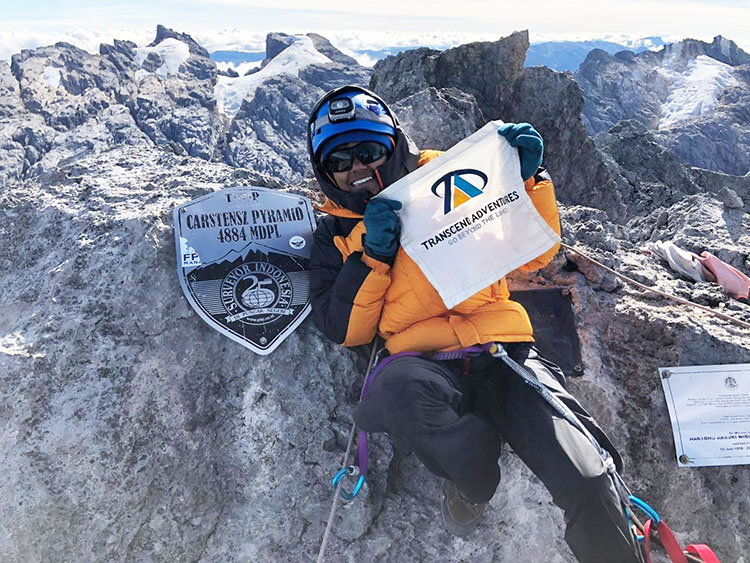
A Change of Scenery
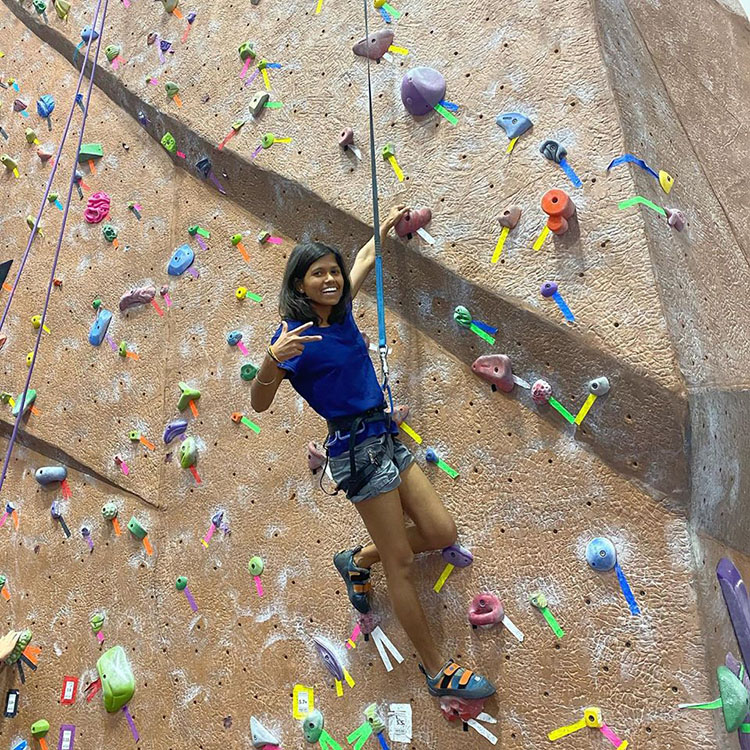
Malavath received another opportunity to try something new in 2019 when she was invited to study in the United States for a year of college. By this time, she had already completed two of her three years of undergraduate studies, focusing on history, economics and political science. Praveen Kumar worked with representatives from the U.S. Consulate in India to find the best place for Malavath, and they decided on MSU-Mankato. She arrived in Minnesota in the fall of 2019 to study for two semesters, and she’ll graduate in May 2020.
“Living in Minnesota is a life-changing experience,” Malavath said. “I’ve learned so much about American culture, diversity and people’s lifestyles. Plus, people in Mankato are very friendly, and I’ve enjoyed spending time with them. People are very tolerant and very helping in nature. When I return home, [that] is the thing I’m most going to miss.”
When she reached the top [of Mt. Vinson], she unfurled an MSU Mavericks flag, signed by university president Richard Davenport
Malavath lives on campus and has become involved in university life, including giving talks on her experiences. She said the educational experience in the U.S. has been much different than her home university, since MSU’s technology and infrastructure is much more advanced.
“The instructors here are very friendly and well trained,” she said. “I like all the professors and classes. I wish I take them all to India!”
In her free time, Malavath has also traveled throughout the country, visiting places such as Florida, Washington, California and New Jersey, as well as several locations in Minnesota, from Minneopa to Duluth.
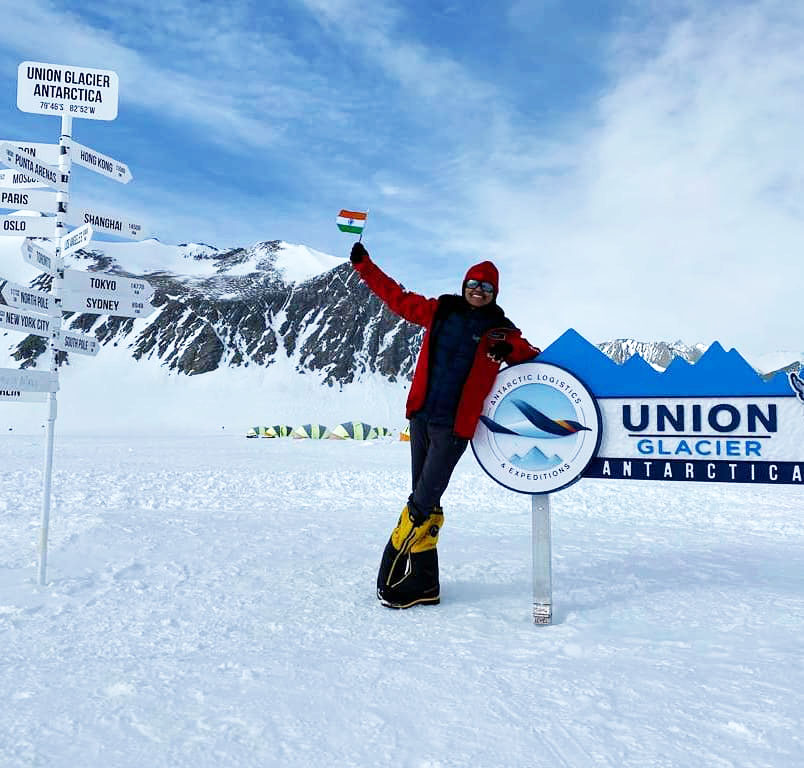
Her biggest trip, though, came during MSU’s winter break, when she traveled to Antarctica to climb her sixth mountain, Mount Vinson. She was in Antarctica for about two weeks, camping in tents with her small team and weathering temperatures that averaged -20 degrees F. For this trip, she wasn’t able to use porters, so she carried more than 55 pounds of equipment herself, ranging from her tents to her 15-day supply of food.
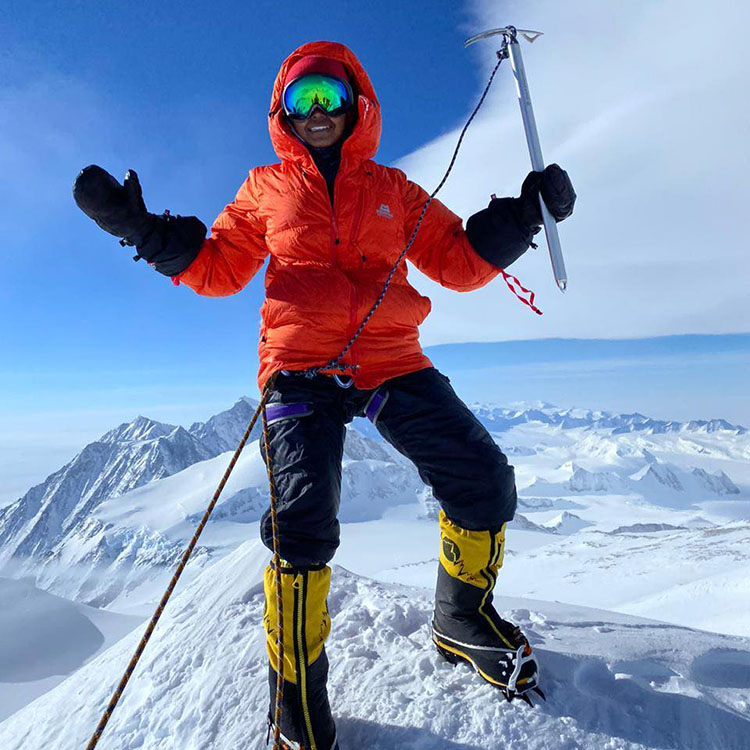
When she reached the top, she unfurled an MSU Mavericks flag, signed by university president Richard Davenport, to take a picture for her American friends.
“It was so cold… extremely cold,” she said. “But I really enjoyed the expedition, because my team members were really good colleagues and were really fun. And Antarctica was really beautiful.”
Future Goals
Malavath has one more peak to complete the Seven Summits: Denali, located in Alaska. She had planned to climb it last summer, even flying to Alaska, but the trip was cancelled because of poor weather. Now, she said her plan is to climb it sometime this summer before she heads back to India.
“My goal is to complete all seven peaks before my twentieth birthday,” she said, adding that that means she has until early June to succeed.
Once she checks off Denali, though, she isn’t going to stop climbing mountains.
“I want to keep continuing my adventure journey,” she said. “I don’t want to stop climbing.”
Malavath’s other goal is to become a police officer. She said she was inspired by her mentor, Praveen Kumar, who spent many years as a police officer before working in education.
“He helped not only me but many other students who are from [underprivileged] communities,” she said. “I want to become like him. I want to help communities.”
Getting to know Poorna Malavath
- Age: 19
- From: Pakala, Telangana India
- Studying: Economics, history and political science at MSU-Mankato
- Longest summit: Mt. Everest, at 52 days
- Quickest summit: Carstensz Pyramid, at five days
- Favorite mountain she’s climbed: Mount Vinson in Antarctica
- Favorite place she’s visited in the U.S.: Florida “It was like India. It was warm.”
- Future plans: Become a police officer in India
- Facebook Page: https://www.facebook.com/poornamalavath/
Financing Her Adventures
Climbing mountains can be an expensive hobby. The cost of climbing Mt. Everest, from the necessary permits to all the gear to just traveling there, typically runs at least $30,000, while climbing Mt. Vinson can cost another $32,000.
However, Malavath said she doesn’t worry about financing her trips, because her coach and mentor take care of everything.
“I’m really lucky to have them,” she said. “Because of both of them and my parents’ support, I’m here today. I’m doing all this with their support. Without their support, I couldn’t even think to step out of my house.”
Want to Meet Poorna?
Malavath will be one of the key presenters at MSU Mankato’s “Envision”-themed TED Talk on April 17. The event will take place on campus and run from 10 am-4 pm. Tickets for the event cost $25 each.
If you can’t make it to April’s event, you can still learn more about Malavath by picking up a copy of her biography, Poorna:The Youngest Girl in the World to Scale Mount Everest written by Aparna Thota and available on Amazon India. In addition, you can watch the film about her, Poorna: Courage Has No Limit, available on Amazon Prime and to rent on YouTube in Hindi with English subtitles.


